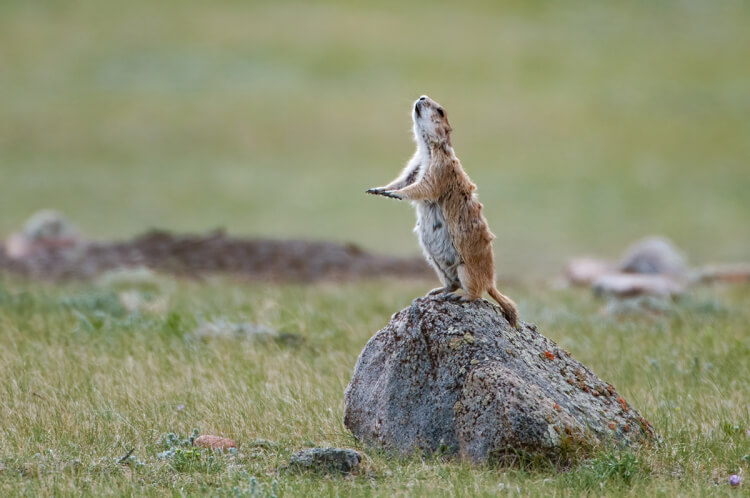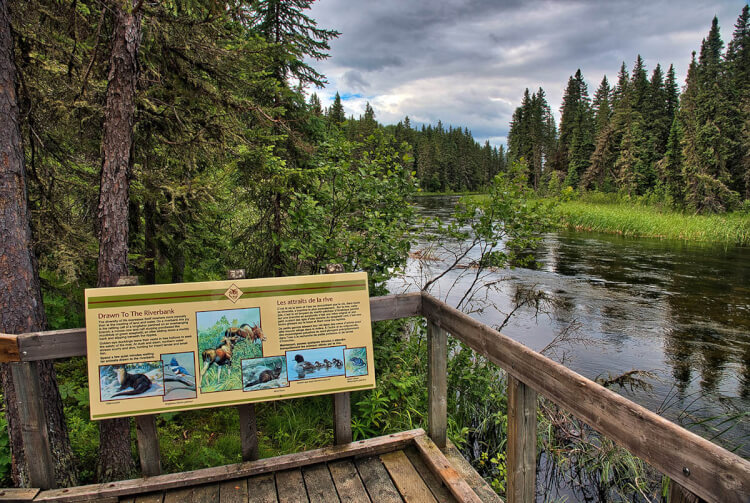
All photos © Robin and Arlene Karpan

The Parks Canada Discovery Pass is one of the best travel deals in the country. Instead of paying admission fees every time you go to a national park or national historic site, you buy a pass that is good for over 80 sites across Canada, and you can use it for a year. It can pay for itself in only a few visits whether your travels take you across the country or close to home. Here are places where you can use it in Saskatchewan.
Grasslands National Park


Stretched along Saskatchewan’s southern border, Grasslands National Park has two large blocks – the West Block near Val Marie and the Frenchman River Valley, and the East Block famous for its wild badlands and the spectacular Badlands Parkway scenic drive. The park has some of the largest tracts of undisturbed grasslands in the country with deeply incised coulees, wild buttes, the wide Frenchman River Valley, and non-stop panoramic views. Both blocks have campgrounds where you can stay in the midst of gorgeous prairie wilderness.

It’s an excellent park for wildlife. You have a good chance of seeing bison, mule deer, pronghorn, moose, and coyotes. You might spot rare or endangered species such as ferruginous hawks, burrowing owls, long-billed curlews, greater sage-grouse, prairie rattlesnake, or eastern short-horned lizard. In summer, you will certainly see plenty of black-tailed prairie dogs in the West Block – the only place in Canada to see them in their natural habitat.

Prince Albert National Park


Located almost smack in the middle of Saskatchewan, the province’s other national park couldn’t be more different. Prince Albert National Park is a land of forest, lakes, and rivers. It preserves a transition zone between the aspen parkland to the south and boreal forest of the north, along with a sizeable chunk of undisturbed fescue grasslands. Wildlife thrives here with more than 325 bird species and larger animals such as wolves, black bears, elk, deer, and free-ranging bison.

The park is tailor-made for exploring with scenic roadways, dozens of hiking and biking routes varying from short one-hour outings to excursions that could last several days, and canoe routes along the many waterways. The classic backcountry adventure, which you can do either as a hike (20-km each way) or a canoe trip is the excursion to Grey Owl’s cabin. It was here that the famous conservationist lived, wrote his best-selling books, and was finally buried.

Batoche National Historic Site

About an hour’s drive north of Saskatoon, Batoche National Historic Site takes you back to the late 1800s when Batoche was a thriving Metis village of about 500 people located along the banks of the South Saskatchewan River.
The Metis traditional way of life changed abruptly in 1885 in the final Battle of Batoche when Metis leader Louis Riel and his supporters were defeated by the Canadian militia. Today, Batoche celebrates and portrays Metis cultural and social traditions, as well as looking at the events of 1885. The visitor centre sets the stage, then you can wander through the extensive site to see the Church of St. Antoine de Padou, and the Rectory. The Rectory still has bullet holes that date back to the final attack on Batoche.

The cemetery contains a mass grave of those who died in the Battle of Batoche, and many early settlers as well. And farther along, you see the outline of the enclosed camp where troops gathered just before the last assault, and Metis homes that provide a glimpse into how families lived here over a century ago.
Fort Walsh National Historic Site


Fort Walsh combines history with a scenic location that is hard to beat. The fort is nestled in a valley in the beautiful Cypress Hills. It too played a crucial role in the development of Western Canada. This was the site of the 1873 Cypress Hills Massacre, when American wolf hunters killed a group of Nakoda whom they accused of stealing horses. Concerned about this incident and increasing lawlessness, the Canadian government established the North West Mounted Police.
Fort Walsh was established in 1875 to ensure a peaceful settlement of the West and to control the illegal whiskey trade. In later years, the fort was used to train horses for the RCMP musical ride.

You can tour the impressive visitor centre along with several buildings in the fort, where guides in period dress bring alive stories from the past. Equally compelling is the setting, with walks into nearby hills and along meandering Battle Creek.
Motherwell Homestead National Historic Site

Motherwell Homestead preserves the family homestead of W.R. Motherwell and his family. A visit sheds light on the pioneering spirit and innovation in the early years of dryland farming. The farm incorporated shelterbelts, orchards, and gardens. Motherwell went on to play a leading role in agriculture and served as agriculture minister at both the federal and provincial levels.

You can take self-guided tours of the large fieldstone house known as Lanark Place which dates to 1897, and see animals in the barn, and equipment such as binders and early tractors in the implement shed. Guides in period dress around the site give you a taste of farm life, chores, and activities a century ago. Special events take place throughout the season.
Other National Historic Sites in Saskatchewan
Some national historic sites do not charge admission fees. Some of our favourites include:
- Fort Battleford National Historic Site just outside the town of Battleford depicts the life and culture of First Nations people, settlers, and Metis. The fort was established in 1876 as a North West Mounted Police Post. Since Battleford was the first permanent capital of the North West Territories, the fort played a pivotal role in government relations, especially Treaty Six negotiations with First Nations people of the region. It was also involved in the 1885 conflict when residents of Battleford took refuge in the fort fearing unrest from Chief Poundmaker’s Cree. It served as a base for many of the Canadian government’s military operations.

Fort Battleford National Historic Site, Saskatchewan. - Fort Livingstone National Historic Site just north of Pelly in northeastern Saskatchewan was the first NWMP headquarters and served temporarily as the first capital of the North West Territories. The site is fairly low-key with only a few historic markers. It is best known for its springtime garter-snake orgy when the slithering reptiles emerge from their wintering sites and congregate in huge mating balls.
- Frenchman Butte National Historic Site is site of a major battle during the 1885 conflict when the Canadian militia fought followers of Chief Big Bear’s Cree.
How to get a Discovery Pass
You can buy a Discovery Pass at national parks and historic sites or order online. Current prices are $75.25 for adults aged 18-64 (17 and under are free), $64.50 for seniors aged 65+, or $151.25 for a Family/Group (up to 7 people in a vehicle). The pass is good for 12 months from the date of purchase, so you can buy it at any time of the year.
Further Information
Our travel guide Saskatchewan’s Best Scenic Drives tells you more about many of these places and how to get there. You can order a copy at Parkland Publishing.
You might also enjoy reading these related posts on Photojourneys.
20 Photos to Inspire You to Visit Prince Albert National Park
Five Easy Hikes in Saskatchewan’s Prince Albert National Park
17 Photos to Put Grasslands National Park on Your Must-See List
SUBSCRIBE to Photojourneys below
Feel free to PIN this article on Using your Parks Canada Discovery Pass in Saskatchewan


